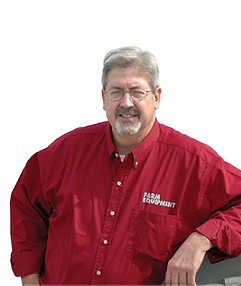When it comes to the new technology that’s reshaping the farm equipment business, dealers can’t afford to ignore the changes. We can disagree, we can dislike and, maybe we can delay the impact of these changes. But we can’t deny that big changes are underway.
We saw some of these last year. John Deere debuted its SESAM, a fully battery powered tractor. Case IH and New Holland rolled out their concept autonomous tractors. Kubota also introduced its first autonomous tractor. AGCO launched the Fendt e100 Vario, which it calls “a practical, all-electric compact tractor.”
While making ag machinery bigger has been the typical response to increasing field productivity, it’s doubtful we’ll see equipment getting much larger than it is now, especially with size and weight limitations and soil compaction becoming a major issue for farmers.
Norbert Beaujot, founder of SeedMaster, says his firm was the first in North America to build a 100 foot seeder. But when he asked himself, ‘What’s the next step to improve efficiency?’ His answer is not by building a 120 foot seeder.
Beaujot’s alternative through his DOT subsidiary to making equipment bigger is a diesel powered autonomous platform, which eliminates the driver and is capable of performing a variety of field operations.
Another proposed solution has been agbots, or agricultural robots. AGCO’s Fendt introduced MARS (Mobile Agricultural Robot Swarms) a few months ago. MARS uses small robots operating in swarms and cloud-based technology to plan, monitor and accurately document precise planting of corn.
Deere recently acquired Blue River Technology. It is applying machine learning to sprayers that are capable of recognizing weeds in the field and applying herbicides, or spot spraying each weed individually.
And there’s more coming as you can see in the special report in this SHOWCASE issue of Farm Equipment. When these developments will reach full bloom is still in question, but the fact that they are starting to bud is not.
So, where does all of this leave dealers?
Matt Rushing, vice president, Global ATS Product Line, AGCO Corp., believes there’s enormous opportunity for the dealers who are ready take on the new technology. He says, farmers still have a crop to grow and dealers still have equipment to sell. “Not much” will change in selling equipment, but he adds the value of the purchase will remain the golden rule. He believes dealers will need to bundle services into the cost of the equipment to make up for the loss of parts and repair income.
“Most of the money made in a dealership is on parts and service. So what you’ll see with all the new capabilities on a machine are additional value-added services that you buy at the time you buy the new machine.” For example, dealers could include an annual pre-season inspection or load farmers’ prescription maps in the purchase price.
“There’s going to be more reliance on equipment dealers and technology specialists to make sure all this technology is working the way it should, but it will be part of the purchase.
“Farmers are skeptics,” says Rushing. “You’ve got to have something that’s demonstrable and you need facts to back it up. Once you have that and can prove the benefits, you’ll see more and more farmers buying the new technology.”
And while ag technology is changing, what won’t change is good selling, solid service and product knowledge. That’s where dealers have always fit.








Post a comment
Report Abusive Comment